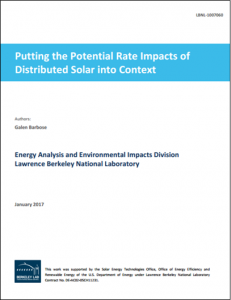 Solar is under fire from many utilities and many special interest groups linked — visibly or not-so-visibly — to utilities. The most effective bit of propaganda in their arsenal is the mistruth (can we say “lie”?) that electricity ratepayers without solar subsidize those ratepayers with solar. They often paint those without solar as poor and those with solar as rich, which is completely fabricated as research including some of New England Clean Energy’s own shows.
Solar is under fire from many utilities and many special interest groups linked — visibly or not-so-visibly — to utilities. The most effective bit of propaganda in their arsenal is the mistruth (can we say “lie”?) that electricity ratepayers without solar subsidize those ratepayers with solar. They often paint those without solar as poor and those with solar as rich, which is completely fabricated as research including some of New England Clean Energy’s own shows.
Numerous state-sponsored studies contradicting the first claim have done little to quiet the naysayers. But now, a new report from Lawrence Berkeley National Laboratory – considered a paragon of excellence in research and objectivity – has published what should be the definitive report on this issue.
Rather than re-invent the wheel, I present the highlights of the research as published by two reputable sources: Berkeley Lab itself, and PV Magazine.
| Source: Executive Summary of “Putting the Potential Rate Impacts of Distributed Solar into Context,” published by Lawrence Berkeley National Laboratory, Jan. 2017 | “Berkeley Lab finds negligible potential rate impacts from distributed solar,” an article by Christian Roselund, published in PV Magazine on Jan. 20, 2017 |
|---|---|
| “The rapid growth of distributed solar in a number of states has raised questions about its potential effects on retail electricity prices, prompting concerns by some utilities and stakeholders about cost-shifting between solar and non-solar customers.” | "The 'cost shift' from solar system owners to other utility customers is one of the most widely propagated myths around PV. And despite this obfuscation being repeatedly disproven by many studies, it remains widely propagated by utilities and either poorly informed or outright captured politicians and regulators from Maine to Arizona." |
| “For the vast majority of states and utilities, the effects of distributed solar on retail electricity prices will likely remain negligible for the foreseeable future…the effects of distributed solar on retail electricity prices are, and will continue to be, quite small compared to many other issues.” | “The latest report from the respected national lab finds that even if – big if – behind-the-meter solar is raising the rates of other utility customers, the impacts are tiny, especially compared to other activities.” |
| “At current penetration levels (0.4% of total U.S. retail electricity sales), distributed solar likely entails no more than a 0.03 cent/kWh long-run increase in U.S. average retail electricity prices, and far smaller than that for most utilities.” | “The report finds that distributed solar would bring no more than a .03 cent per kilowatt-hour ($0.0003/kWh) long-run increase in retail utility prices, but that the result could just as well be a decrease of the same magnitude.” |
| “Where concerns about minimizing retail electricity price remain a priority, other issues may prove more impactful…future electric-utility capital expenditures are expected to have, by far, the greatest impact on the trajectory of retail electricity prices.” | “It may be that utilities and disingenuous regulators would like to divert attention from other costs, like those involved in building new conventional power plants and un-needed infrastructure.” |
Read the full, 51-page report here.
Lawrence Berkeley National Laboratory is, according to its website, “a member of the national laboratory system supported by the U.S. Department of Energy through its Office of Science. It is managed by the University of California and is charged with conducting unclassified research across a wide range of scientific disciplines.”
If you liked this article, you might also enjoy:
Solar Subsidies and Scare Tactics
How Solar Benefits All, and is Accessible to All





No comments yet. You should be kind and add one!
The comments are closed.